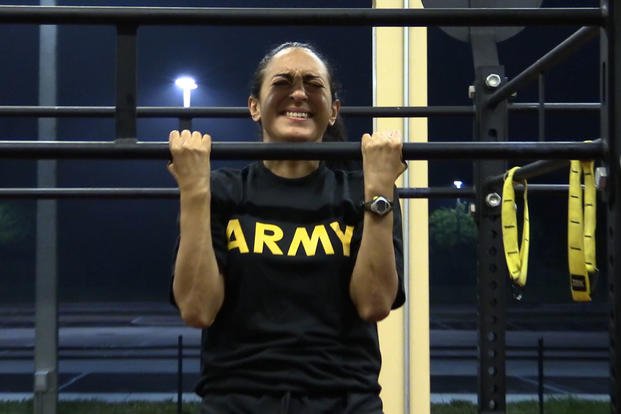If you were not aware, the Marine Corps made some pretty big changes not only to the physical fitness test (PFT), but also to the combat fitness test and body-fat standards. Here is an email from a female Marine recruit considering her options as she prepares for a future in the USMC:
Stew, I am heading to USMC OCS in the next few months. I have been working hard on running, rucking, and upper-body PT. I am still only doing 3 pull-ups, but I can do over 50 push-ups. I just saw the Marines just changed it so all Marines can opt to do push-ups instead of pull-ups or the flexed arm hang. Do you have any recommendations for that, or should I still focus on pull-ups? Just curious -- what are your opinions of these changes? Thanks - Sam
Sam,
I recommend you keep working on your pull-ups forever. The strength gained from pull-ups is essential to performing certain events, such as pulling yourself over walls, fences and obstacles, and succeeding in events that require grip strength. Even if you never take a pull-up test in your future, the pull-up is one of the best exercises we can do in tactical professions.
But now, it is up to you if you want to test with pull-ups or push-ups. Do the math and see on which one you score more points. If you only get the minimum in pull-ups but max out the push-ups, you may notice the scoring might not be that different. Find out more about the changes, set to go into effect on Jan. 1, 2017.
An Alternative to Pull-ups
Pull-ups and the flexed arm hang can be replaced by push-ups. The max for pull-ups increased as well. Men have to score between 20-23 to max the test (100 points) while women must achieve 7-10 pull-ups for 100 points, depending on the Marine’s age. If you choose push-ups, you cannot get a full 100 points. The max you can do is 70 points for scoring 40-50 push-ups (women) and 70-80 push-ups (men), depending on age.
New Standards for Running and Crunches
If you look at the new requirements, there are more age groups with increased difficulty in scoring on the running and crunches portion of the test. The minimums and maximums are harder for each age group.
New Body-Fat Standard
Before you let yourself go, only the PT animals can skip the body-fat standards test. If you score 285-300 on the PFT and the combat fitness test (CFT), you are exempt from having your body fat tested. If you score 250 or more, you are allowed an extra body-fat percentage.
My opinion really does not matter because I do not speak for the military, but as I look at these changes, it appears to be a solid compromise within the Marine Corps between those who want women to do pull-ups vs the flexed arm hang and those who do not. It sets a new standard that is still respectable and difficult to attain without consistent training. Besides, I would much rather do push-ups than a flexed arm hang. I personally have thought flexed arm hangs were tougher than pull-ups, but not as useful with regard to physical readiness.
The body-fat standards make sense, too. The height/weight and circumference measurement tables often can be skewed if you have more muscle in your legs, butt and upper torso. I think they raised the fitness bar and will still be making very fit Marines for years to come.
Stew Smith is a former Navy SEAL and fitness author certified as a Strength and Conditioning Specialist (CSCS) with the National Strength and Conditioning Association. Visit his Fitness eBook store if you're looking to start a workout program to create a healthy lifestyle. Send your fitness questions to stew@stewsmith.com.
Want to Learn More About Military Life?
Whether you're thinking of joining the military, looking for fitness and basic training tips, or keeping up with military life and benefits, Military.com has you covered. Subscribe to Military.com to have military news, updates and resources delivered directly to your inbox.


















